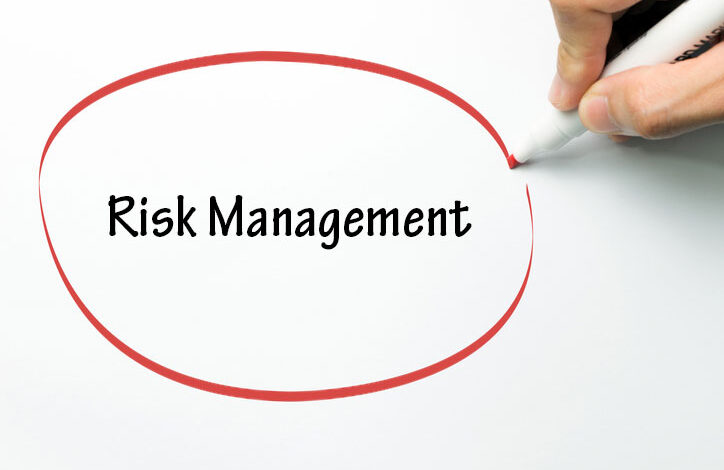Utilizing Compliance Monitoring Software for Effective Risk Management in Life Sciences

In the highly regulated landscape of the life sciences industry, maintaining commercial compliance is both a necessity and a challenge. With the increasing complexity of regulations and the high stakes associated with non-compliance, companies are turning to advanced technologies to streamline their risk management processes.
Among these technologies, compliance monitoring software stands out as a crucial tool for ensuring adherence to regulatory requirements and minimizing risk. In this blog, we will explore what is effective risk management, and the importance of compliance monitoring tools in the life sciences industry.
What Is Effective Risk Management In Life Sciences?
Effective risk management in life sciences compliance refers to the systematic process of identifying, assessing, prioritizing, and mitigating risks associated with regulatory compliance in the life sciences industry. This involves ensuring that all commercial activities adhere to the stringent regulatory standards set by authorities such as the CMS, OIG, and other international agencies. The process typically involves several key steps:
1. Risk Identification
Risk identification is the first step in the risk management process. This involves recognizing potential risks or uncertainties that could affect the project, activity, or organization. In the context of life sciences commercial compliance, risks might include regulatory changes, non-compliance with industry standards, or product safety concerns. By systematically identifying these risks, organizations can better prepare to address them proactively.
2. Risk Assessment
Once risks have been identified, they need to be evaluated in terms of their likelihood and potential impact. Risk assessment involves analyzing the probability of each risk occurring and the extent of its impact on the project or organization. In life sciences, this might include assessing the risk of regulatory non-compliance, which could lead to fines or penalties, legal action, or damage to the company’s reputation. By understanding these risks, organizations can prioritize them and allocate resources effectively.
3. Risk Mitigation or Control
Developing and implementing strategies to mitigate or control identified risks is crucial. This involves creating plans to reduce the likelihood of risks occurring and minimizing their impact if they do. In the life sciences industry, risk mitigation might include implementing robust compliance programs, conducting regular audits, and training employees on regulatory requirements. Additionally, organizations can develop contingency plans to address risks that do materialize, ensuring that they can respond quickly and effectively.
4. Risk Monitoring and Review
Risk management is an ongoing process that requires regular monitoring and review. This involves continuously tracking identified risks, evaluating the effectiveness of risk management strategies, and making necessary adjustments. In the life sciences sector, regulatory environments are dynamic, and new risks can emerge rapidly. Regular monitoring ensures that organizations remain compliant and can adapt to changes in the regulatory landscape.
The Role of Compliance Monitoring Software
Compliance monitoring software is designed to continuously track, analyze, and report on an organization’s compliance status. It integrates with various data sources, processes large volumes of information, and identifies potential compliance issues before they escalate. By leveraging advanced analytics, machine learning, and automation, compliance monitoring solution enhances an organization’s ability to manage risks effectively and maintain regulatory compliance.
Key Benefits of Compliance Monitoring Software
Real-Time Monitoring and Alerts
One of the most significant advantages of compliance monitoring software is its ability to provide real-time monitoring and alerts. This feature ensures that any deviations from compliance standards are immediately detected, allowing organizations to take swift corrective actions. Real-time alerts help in mitigating risks early and prevent minor issues from becoming major compliance violations.
Enhanced Data Integration and Analysis
Compliance monitoring software can integrate data from multiple sources, including internal systems, third-party vendors, and regulatory databases. This comprehensive data integration enables a holistic view of compliance across the organization. Advanced analytics tools within the software can identify patterns, trends, and anomalies that might indicate compliance risks.
Automate workflows
Manual monitoring processes are prone to errors and oversights. Compliance monitoring software eliminates these risks by automating routine tasks and providing accurate data analysis.
Streamlined Auditing Processes
Compliance monitoring solutions facilitate more efficient and effective auditing processes. By maintaining a centralized repository of compliance data and audit trails, they simplify the audit process, ensuring that all necessary information is readily accessible. This not only enhances transparency but also reduces the time and effort required for audits.
Proactive Risk Management
By continuously monitoring compliance status and analyzing data, compliance monitoring software facilitates proactive risk management. Organizations can identify potential compliance issues early, assess their impact, and implement preventive measures. This proactive approach minimizes the likelihood of regulatory violations and associated penalties.
Improved Decision-Making
The insights provided by compliance monitoring tools empower decision-makers with accurate and timely information. This data-driven approach enhances the quality of decisions related to compliance strategies, resource allocation, and risk mitigation. Informed decisions contribute to a more robust compliance culture within the organization.
Scalability and Flexibility
Compliance monitoring software is designed to scale with the organization’s growth. Whether an organization is expanding its operations or entering new markets, the software can adapt to changing compliance needs. This flexibility ensures that organizations can maintain compliance regardless of their size or complexity.
Enhanced Collaboration
It facilitates communication and collaboration between different departments, ensuring a unified approach to compliance.
9. Enhanced Transparency and Accountability
Audit Trails: Maintains detailed records of compliance activities, facilitating transparency and accountability.
Role-Based Access Control: Ensures that only authorized personnel have access to sensitive compliance information, enhancing security.
qordata’s Global Compliance Monitoring Solution: A Comprehensive Approach
This global compliance monitoring software harnesses the power of Artificial Intelligence, including OCR, Computer Vision, Data Science, and Machine Learning, to automate compliance monitoring programs.
With this solution, compliance teams can comprehensively identify key risk areas, individuals, and activities across the organization. They can also assist in risk mitigation by developing targeted monitoring plans and conducting live analytical and T&E monitoring activities. Additionally, the platform allows teams to track and manage remedial actions while analyzing key risk indicators and monitoring activities within a unified interface.
Conclusion
In the life sciences industry, compliance is a critical component of risk management. With the increasing complexity of regulations, organizations need robust tools to ensure adherence and minimize risks. Compliance monitoring software, such as qordata’s global compliance monitoring solution, offers a comprehensive and effective approach to managing commercial compliance risks. Empower your life sciences company to stay compliant, mitigate risks, and maintain a strong reputation in the industry.



